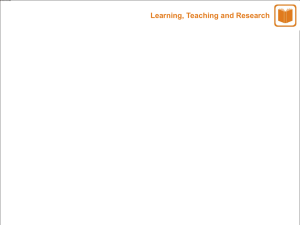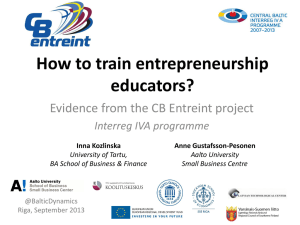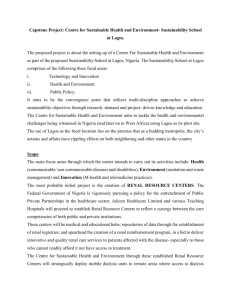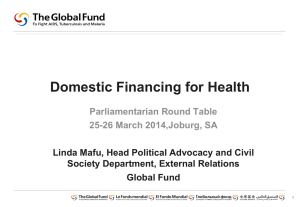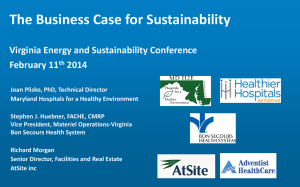Eye care in developing countries: creative financial options
advertisement
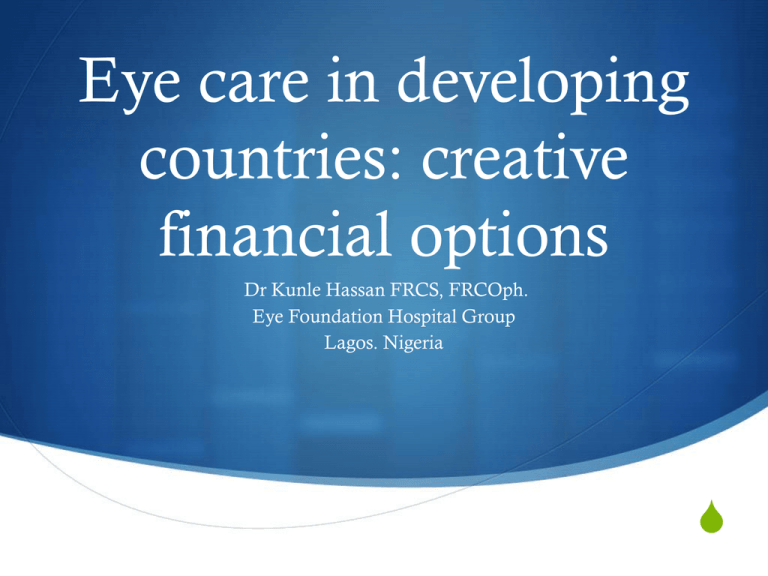
Eye care in developing countries: creative financial options Dr Kunle Hassan FRCS, FRCOph. Eye Foundation Hospital Group Lagos. Nigeria S The challenges of our generation How can we : S Reduce blindness S Grow outreach of eye clinics/hospitals S Transform the financing of the eye care industry with priority on sustainability S Provision of quality, equitable, affordable and cost effective and efficient eye care services for all Financing Options S Sliding Fees Structure S Optical Services S Cross Subsidization S Insurance Schemes S Service Contract with Corporate Companies S Donor Funding S Government Funding S Loans EYE FOUNDATION SERVICE DELIVERY MODEL S PRIVATE-PUBLIC-COMMUNITY BASED TRIPATITE Eye care System. Social Entrepreneurship model of equitable, affordable and sustainable eye care delivery system. The Eye foundation centre for the prevention of blindness consists of: S hospitals with state of the art equipments. This is the private arm of the establishment. S Caters for the rich and the middle class and expatriates S Has 100% cost recovery S The public/Community hospitals: 30% cost recovery S The community outreach programme: no cost recovery S The private sector in 1 above sustains the public and community based subsidised services. EYE FOUNDATION PUBLIC SECTOR S These are separate Eye Hospitals running a Sliding Scale Eye care services for the less privileged according to their ability to pay. S Here over 67% of Services are subsidized. 33% of the Services are provided free: S The Deseret Eye Center. Ikeja GRA Lagos S The Deseret Eye Center, Ijebu-Imushin. Ogun State PRIVATE SECTOR S A Solid and well run private sector is key to the success of a successful model. S It provide the major resources from Surgeries, High tech Investigation procedures, like OCT, FFA, Laser treatments and Optical Services S Cost recovery with profit margin is good. S Hence a means of paying for expensive fixed cost, like infrastructures and equipments. PUBLIC SECTOR S Volume driven service with the goal achieving critical break even point is key to successes and sustainability. S High Volume, low cost optical sales provide about 40-200% profit margin. S Drug revolving fund using effective and low cost generic contributes about 20-40% of profit margin towards achieving sustainability. EXTERNAL FUNDING S INSURANCE – via HMO is good where reimbursement is assured. Privately organized Community Insurance scheme is the future in SSA. S Government funding is unreliable and laden with corruption. Could be useful in providing infrastructure . S Donor Funding – is important as a catalyst, but not as the primary source of funding. Helpful in the start up stage. Better in form of providing part of fixed cost (equipments and Infrastructure) or a cushion in supporting variable cost like consumables. Never in cash, it can undermine or blur your entrepreneurship and innovation ability. External Funding S LOAN – with low interest rate and long term repayment is critical to expanding eye care business and creating new growth platform, especially in Private/Public Social Entrepreneurship approach to eye care. S The Eye Foundation Program in Nigeria, had an increase in service provision coverage area by 300% and with an increase of about 50% in the Private sector and 150% in the Public and community sector, 3 years after our assess to the EYE FUND LOAN and IAPB Capacity Building Grant CONCLUSION S A balanced Internally generated fund and external assess to funding, with good and robust risk appetite that is well defined, is key to creative financing of any successful and sustainable eye care in developing countries.


